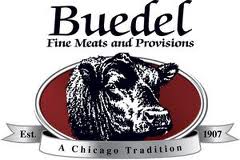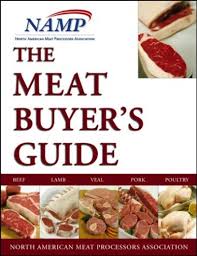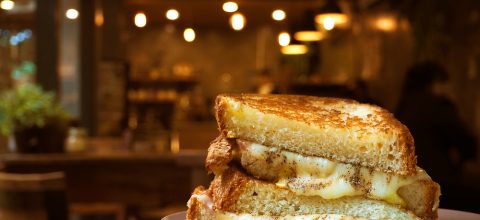I don’t know how it happened, but my family has become somewhat spoiled when it comes to dining out. There are those nights when I just want to go out and treat myself to a good meal. You know the feeling: I don’t want to cook, but do want to have something simply prepared, using good ingredients and paired with a great glass of wine or beer to help with the digestion.
I enjoy a good steak once in awhile. However, my family doesn’t always want to partake in that particular culinary experience. You may ask yourself, “Is it the process of going out and sitting down for dinner for a couple of hours, or is it the cost of the meal?”
The answer is neither. My family’s hesitation is simply the fact that they think they can get a better meal at home. Hence, the Rubberband Door Knob is open, and yours truly is at the stove. They are spoiled by my cooking! My family prefers to have me cook steak at home.
In Chicago, we are spoiled by the number of high-quality steakhouses here in the Midwest, from the old staples of Gene and Georgetti, the Original Morton’s and, of course, my favorite Gibson’s. The steaks aren’t bad, either. Then we have the new places vying for the Best in the City from David Burke’s Prime House, Bavette’s Bar and Boeuf and Benny’s Chop House. Every one of these has coolers full of thick-cut, prime, dry-aged steaks. Chefs cook them at high heat with minimal seasonings to create a great crust, and the steaks come to the table properly cooked and well presented. So why do my family members, who have all eaten at these places, still say I cook a better steak?
I am going to explain how I do it. I don’t think it is complicated, but it does require a certain level of patience and understanding. I am not putting myself on a pedestal here, but there may be some things you can take away from this!
It starts with the meat. I wish I could afford prime beef all of the time, but I can’t, and for the majority of the steaks I cook, I actually prefer a good choice grade. I like certain cuts over the others.
The tenderloin and its various classical cuts such as the Filet, Mignons and Chateaubrion, though tender, need a lot more thought put into them to get a great flavor. Rubs and wraps with bacon, fine cream-based forcemeats and sausage meats go a long way in that category, but that is another lesson.
Then there are the macho steaks, which include “The Cowboy,” “The Original Delmonico” or any of the other beastly-named bone-in rib steak found on menus. Leave the rib whole, and don’t cut steaks. Slow roast the meat and carve it on or off the bone. Chefs know that the bone is there for a reason: it keeps the shape of the steak, prevents shrinkage and, if cooked right, makes a hell of tasty piece to chew on.
However, if you have the desire to break down a whole rib, pull off the spinalis muscle. That, my friends, is the piece that has the best flavor of the whole muscle structure, and is also known as the rib-eye cap. Some Beef Marketing Boards are selling this as a new type of value-added steak. I think it is also a very expensive option unless you can trim down whole ribs. Try braising the rib-eye cap or quickly grilling it and slicing it thin!
What’s left? There is plenty of cow left, and many other cuts and steaks produced both in the retail and food service markets. These other steaks all need some form of helping whether through jaccarding, marinating or undercooking to some degree. I don’t care what some catering companies and/or restaurants say, the mock-tender or the teres major muscle will never taste or eat like a tenderloin.
So, if you want a steak that is synonymous with what a true “steak” should be, it is going to always come down to the strip, and a true strip is either the Bone-in Kansas City Strip or the Boneless New York Strip! I look for a steak that is at least 1″ thick. These will range in weight from about 12 oz for the boneless to about 16 oz for the bone-in. Don’t forget you don’t have to eat the whole thing. You can get two nice-sized portions from one steak. Look for some good marbling in the heart of the steak. Ask for about 1/4″ of trim on the top and about 3/4″ tail. I always let the steaks come to room temperature or near there about 30 minutes prior to cooking.
The next ingredients are vital: salt, cracked black pepper (no containers here), oil (not olive oil) and whole butter (yes, you read that right: whole butter). If you want to be more adventurous, fresh thyme springs, sliced shallots and cloves of garlic are great additions. There are no magic rubs, flavored oils or injections, and don’t even think about pulling out the circulating cooker or vacuum machine.
Here you go, the steps for success.
Season the steak liberally with salt and pepper. Heat a heavy carbon steel or cast iron pan without any oil. Rub the steak with the oil to lightly coat. Place in the pan only when the pan is hot. Now leave it alone, turning down the heat ever so slightly. When you see little dots of blood coming through, turn it over and then leave it alone again. By now there should be some smoke in the kitchen. Have an adult beverage and relax. Let the steak get some color on the second side, and then the fun starts.
Add a good amount of whole butter, and the aromatics if you are using them. Grab a spoon, and when the butter is bubbling and melted, baste the steak with the hot butter. Keep basting it to give the steak some more color. Turn the meat over again and cook that side for a few more minutes while basting continuously. If you are comfortable with doing so, press to touch for doneness (123°F). The shallots, thyme and garlic should have perfumed the room and the steak. Pull the meat from the pan and place it on a rack.
Pour the aromatics over the steak setting on the rack, and walk away for a while. Entertain some friends, set the table or take a few pictures to post on Vine or Facebook. Do anything you have to in order to resist the urge to cut into that thing.
This is, to me, the secret of good steak. Rest and patience. You need to be engaged in the cooking of the item. Don’t just throw it in a pan and let it cook by itself. You need to be part of the process.
After 10 minutes, you are finally ready! I trim the cap and tail off of the steak. You see, I am very cost conscious. If it was prime cut, would you throw that away? No! You might just eat it out of guilt. Now, either serve the steak whole or slice it. It will be tender and perfectly cooked. Sprinkle a little sea salt over it and enjoy!
That was a lot of words for the cooking of one steak, but it describes what makes the difference in your cooking and approach to food. Some food takes time. We should not be in the profession of “everything needs to get cooked at the speed of light.” Go out and eat at the great restaurants in your town or city. There are many places slowing things down and taking the time to cook food properly. Why do we have to be rushed all of the time? On a slow night, when there is a young cook learning the ropes, put this on his or her station and teach him or her how to appreciate the skills and patience it takes to make something perfect. Instead of me spoiling my family, go out and spoil your customers.
Thanks for reading. Look around the page and see some of the other suggestions for your next steak special.
Recipe
Compound Butter Recipe
Try this on your steak!
Softened butter flavored with:
- Anchovy paste
- Worcestershire sauce
- Chopped garlic
- Chopped parsley
- Mustard powder
- Sea salt
- Cracked black pepper
Get Your Meat
Buedel Meats

A South Side Meat Purveyor that specializes in sub-primal and boxed beef fabrication, they have an on-site dry-aged room for beef and lamb.












